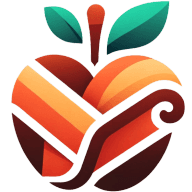Welcome to a deep dive into the complex world of food supply chain and logistics. This blog post aims to shed light on the intricate processes that ensure food items make their way from farms to your dinner table. We'll explore the various stages, the challenges faced, and the innovative solutions being implemented to streamline this vital industry.
The Food Supply Chain: An Overview
The food supply chain is a complex network that connects producers, processors, distributors, and consumers. It starts with the cultivation of raw materials, such as crops or livestock, and ends with the delivery of finished products to consumers.
This process involves numerous steps, each with its own unique set of challenges. For instance, the initial stage of production requires careful management of resources and labor. Producers must also adhere to strict quality standards to ensure the safety and health of consumers.
Once the raw materials are ready, they move on to the processing stage. Here, they are transformed into consumable products. This could involve cleaning, sorting, packaging, and labeling the goods.
The next stage involves distribution. The processed goods are transported to various retail outlets, including supermarkets, grocery stores, and restaurants. This stage requires efficient logistics management to ensure timely delivery and maintain the quality of the products.
The final stage of the supply chain is consumption. This is where consumers purchase and consume the products. The efficiency and effectiveness of the previous stages greatly influence the consumer experience at this stage.
Challenges in the Food Supply Chain
The food supply chain faces a myriad of challenges. These range from environmental concerns to logistical hurdles.
One significant challenge is the issue of food waste. A substantial amount of food is lost or wasted at various stages of the supply chain. This not only leads to economic losses but also contributes to environmental degradation.
Another challenge is the fluctuation in demand and supply. Factors such as seasonal changes, market trends, and consumer preferences can cause significant variations in demand. This can lead to overproduction or shortages, both of which can have negative impacts on the supply chain.
Logistical challenges also pose significant hurdles. These include transportation issues, storage limitations, and inefficient inventory management. These challenges can lead to delays, increased costs, and compromised product quality.
The Role of Logistics in the Food Supply Chain
Logistics plays a crucial role in the food supply chain. It involves the planning, implementation, and control of the efficient flow of goods from the point of origin to the point of consumption.
Transportation is a key aspect of logistics. It involves the movement of goods from one stage of the supply chain to the next. This requires careful planning and coordination to ensure timely delivery and maintain product quality.
Storage and warehousing are also vital components of logistics. These facilities provide a place for goods to be stored until they are ready for distribution. They must be designed to maintain the optimal conditions for preserving the quality of the food products.
Inventory management is another critical aspect of logistics. It involves tracking the quantities of goods at each stage of the supply chain. This helps to prevent overstocking or shortages, which can lead to waste and increased costs.
Technological Innovations in Food Supply Chain and Logistics
Technology is revolutionizing the food supply chain and logistics. Innovations are being implemented at every stage to increase efficiency, reduce waste, and improve product quality.
One such innovation is the use of blockchain technology. This allows for greater transparency and traceability in the supply chain. It enables all parties involved to track the movement of goods from the farm to the consumer.
Artificial Intelligence (AI) and Machine Learning (ML) are also making significant impacts. These technologies are being used to predict demand, optimize routes, and automate various processes. This not only increases efficiency but also reduces human error.
Internet of Things (IoT) devices are being used to monitor and control conditions in storage facilities and during transportation. These devices can track temperature, humidity, and other factors that can affect product quality.
The Future of Food Supply Chain and Logistics
The future of the food supply chain and logistics looks promising. With the continued advancement of technology and increased awareness of sustainability, significant improvements are expected.
One trend to watch is the increased use of automation. From automated harvesting machines to self-driving delivery vehicles, automation is set to streamline various processes in the supply chain.
Sustainability is also expected to take center stage. More and more companies are adopting sustainable practices in their operations. This includes reducing waste, using renewable energy, and promoting fair trade.
The integration of digital technologies will continue to transform the industry. This will lead to greater transparency, improved efficiency, and enhanced consumer experience.
Conclusion: The Impact of Efficient Food Supply Chain and Logistics
The efficiency of the food supply chain and logistics has far-reaching impacts. It affects the economy, the environment, and the quality of life of consumers.
An efficient supply chain can lead to reduced costs, increased profits, and economic growth. It can also contribute to food security by ensuring a steady supply of food products.
From an environmental perspective, efficient logistics can reduce waste and carbon emissions. This can contribute to the fight against climate change.
For consumers, an efficient supply chain means access to a wide variety of high-quality food products. It also means fair prices and the assurance of food safety.
Wrapping Up: Unveiling the Complexity of Food Supply Chain and Logistics
The food supply chain and logistics are complex, yet fascinating. They involve a multitude of processes, face numerous challenges, and are being transformed by technology. Understanding these intricacies is crucial for anyone involved in the industry or interested in the journey of food from farm to fork. As we look to the future, we can expect continued advancements and improvements in this vital sector.

